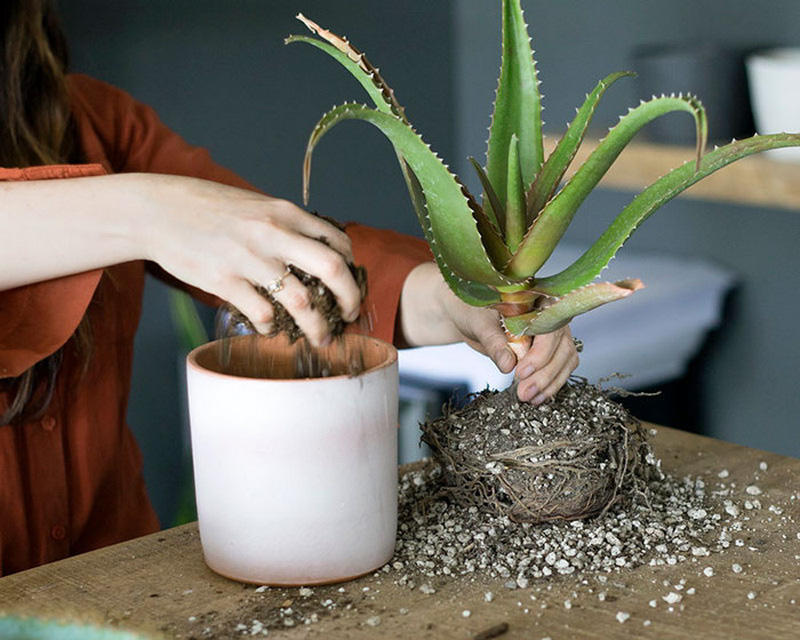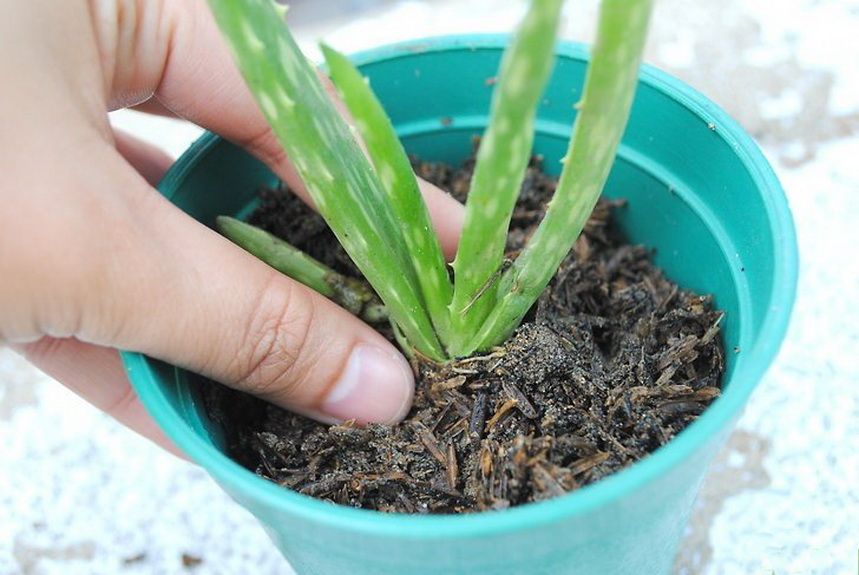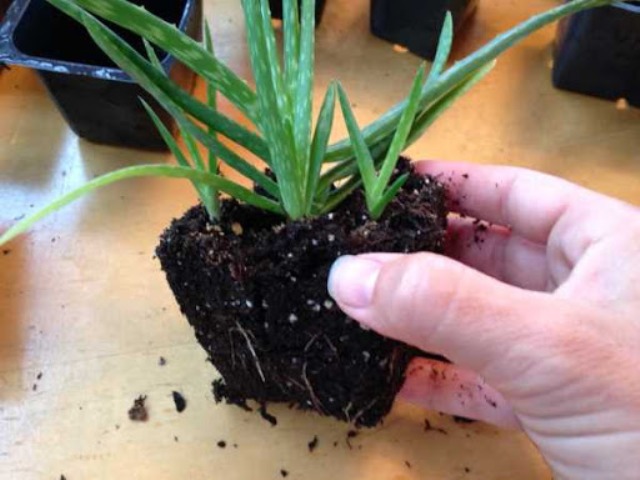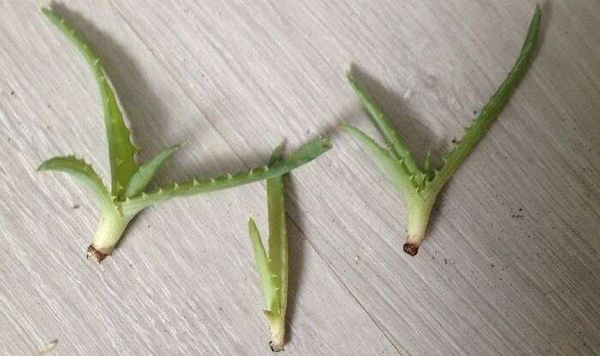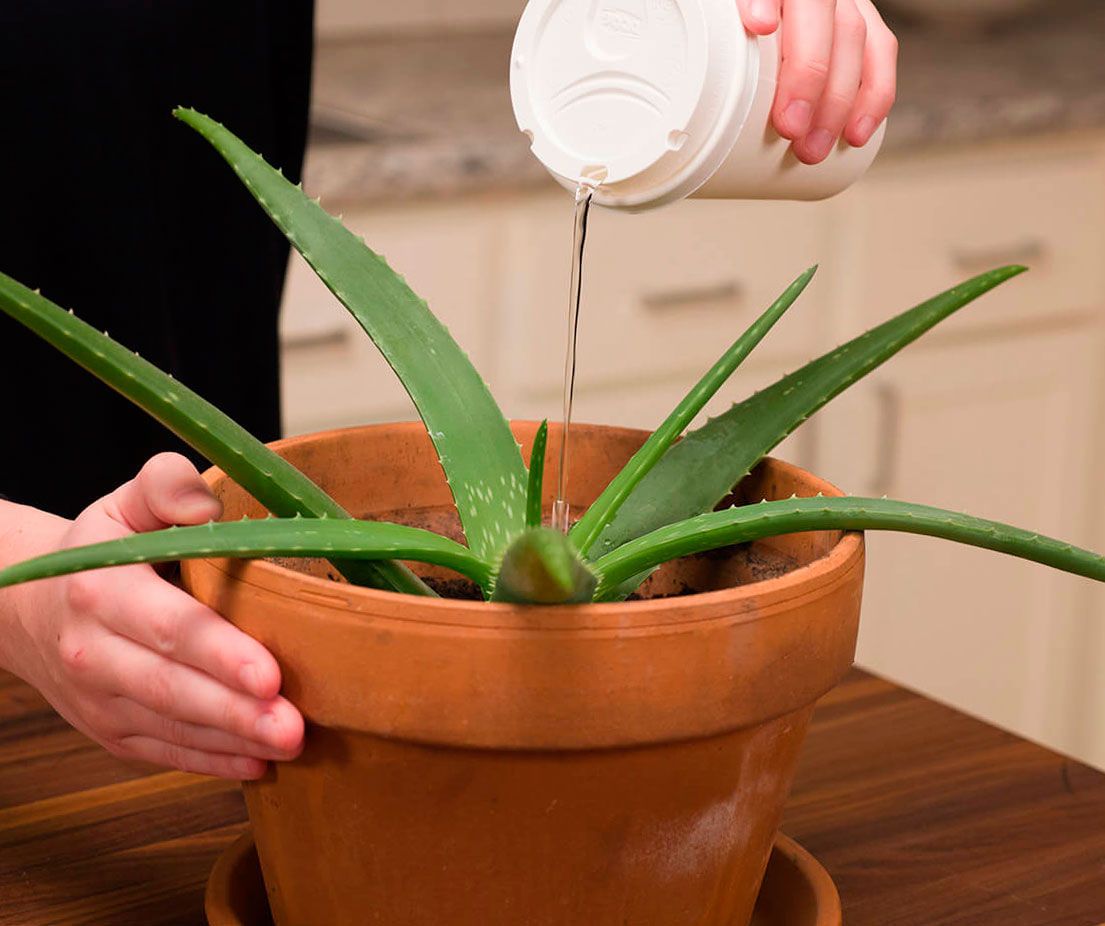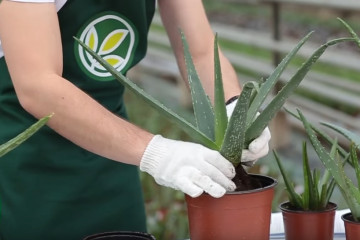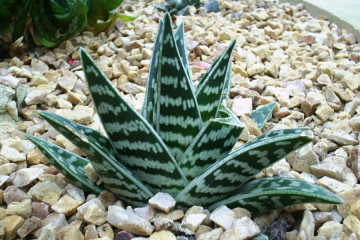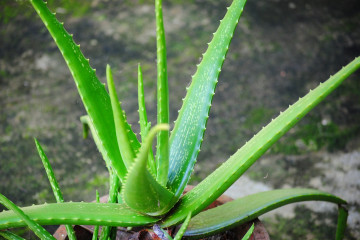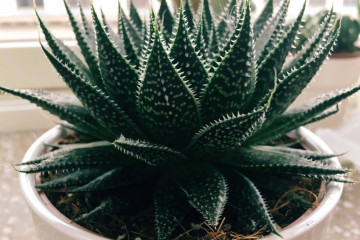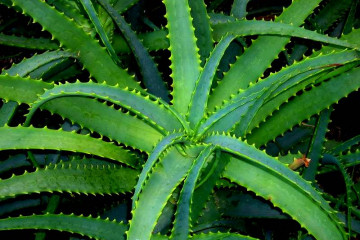How to transplant aloe at home yourself
Content:
When growing indoor plants, the florist must perform a number of activities to care for them. The same goes for aloe. In order for a culture to remain healthy and attractive, it is necessary to periodically move it to a new location. Therefore, you need to know how to transplant aloe.
What is aloe plant and why transplant it
Aloe is a succulent plant that needs ample space. The flower is characterized by a powerful root system, which is characterized by rapid development. Therefore, in order to grow a strong plant, the florist must create comfortable living conditions. Aloe transplant is an important step in caring for it.
There are a number of factors that are the basis for aloe transplant at home:
- The main reason why a flower is grown is its decorative properties. To maintain the beauty of the plant, it should be repotted periodically. This is especially true for adult cultures.
- During the development of the flower, young shoots appear around it in the pot and on the plant itself. With a large number of such shoots, it is required to move the children into separate containers. Otherwise, the sprouts will absorb too many useful elements from the main plant, which will slow down its development and deplete the soil in the container. In addition, plants will constrain each other and hinder proper development. As a result, the flower is deformed, which will negatively affect its appearance.
- As the bush develops, its roots grow. Therefore, the culture has to be moved to a larger container. If the flower is not transplanted in time, the roots may grow through the drainage holes. As a consequence, there is a risk of problems with the rooting of the crop in the new pot. An obvious symptom that the aloe root has reached an impressive size is a violation of the passage of moisture into the soil.
- Transplanting into a new container may be required due to the depletion of the soil in the pot. Succulent is characterized by an impressive coefficient of mineral removal from the soil. In this case, nitrogen is spent rather slowly. In such a situation, an excess of the substance provokes the transformation of the soil into dust. In this case, the upper part becomes rocky. This prevents liquid from getting to the roots. A flowering crop must develop in a nutritious soil. Otherwise, there is a risk of dying off its lower row, and the plant itself will become pale and wither.
- The need for an urgent transplant arises when the culture begins to rot. Similar situations are observed with excessive watering of the plant and the defeat of the agave by some kind of disease. The development of decay processes is evidenced by acidification of the soil in the pot and the blackening of the flower. Often, such problems are observed in winter - in February.
- Planting a plant in a new container is required immediately after buying a flower. The fact is that in the store the plants are sold in a substrate that is not intended for growing at home.
How often can you transplant at home
It is necessary to transplant a culture if the flower has outgrown its capacity and needs a new space. The procedure is often planned and is performed when roots appear from the drainage holes. The lack of nutrients in such a situation provokes the cessation of development. In addition, the flower becomes more vulnerable to attacks of parasites and the development of diseases.
A common houseplant needs to be replanted to a new location every year. This is required until the crop reaches the age of five. Then its development slows down. An adult bush is allowed to be replanted at intervals of 3 years. A young plant has fast growing roots that need more space.
When is the best time to do it
For the transplant to be successful, it is recommended to carry out it before the start of the active growing season or during it. Moving a flower to a new location in early March or with the onset of summer promotes rapid root recovery. The plant adapts more easily to a new substrate and other capacity.
Plant preparation for transplanting
Before replanting aloe, you need to prepare for this procedure. This is required in order for the plant to take root quickly. First of all, you need to choose a pot. Its size is selected taking into account the age of the plant. For a young plant, you need to take a large container. For a flower with sprouts, it is only allowed to change the ground and plant the children in a separate container.
To grow succulents, you must use a plastic or ceramic pot. Polymer pots help to achieve uniform crop development. However, when growing a flower in such a container, it is important to avoid liquid stagnation.
When choosing ceramic pots, it should be borne in mind that this material can pass air. This ensures natural evaporation of excess moisture and helps to normalize the temperature parameters. Thanks to this, it will be possible to facilitate the care of the plant.
Before rooting the culture in the purchased container, it should be thoroughly washed and dried. All containers should have drainage holes at the bottom through which excess liquid will be removed. When transplanting a flower into an old container, it should first be disinfected.
How to transplant an adult plant into another pot
How do you transplant aloe into another pot? The step-by-step process of moving a culture to a new location looks like this:
- A day before moving the culture to a new place, the soil must be well watered and loosened. Thanks to this, it will be possible to facilitate the process of transshipment of the bush and remove the rhizome with a lump of soil.
- Place drainage in a new container with a layer of 10-12 cm. After that it is necessary to add a layer of substrate. The pot should be half full.
- Put the old container on its side to pull out the bush with a lump of soil. When trying to free the roots, it is forbidden to exert effort. If they are needed, it is necessary to additionally moisten the soil.
- Clean the roots from lumps of old earth that are not braided by roots, and place in a new container. Sprinkle it with soil on top. In this case, the root collar should be deepened in the same way as in the old place.
- Water the plant lightly. In this case, the moist soil should stick to the roots. Then fill up the settled soil to the original level and carefully compact it. To slow down the drying out of the earth after compaction, you need to lay out a layer of pebbles or expanded clay.
What kind of pot is needed
What kind of pot is needed for aloe? The new container should be about a quarter larger than the previous one. A pot that is too tight will not work. With a lack of space, the development of the bush slows down, a violation of the development of foliage occurs.
When placing a bush in a container, its roots should be located at a distance of 3-4 cm from the walls. It is important to ensure that they do not run into the container.
When choosing a material, you should give preference to clay, terracotta or plastic. Experts often prefer terracotta or plastic dishes, as there are no pores in their structure.
Such containers retain moisture and do not allow air to pass through, and therefore there is minimal evaporation of the liquid. At the same time, there is also a certain threat. It consists in decaying the root system.
Land requirements
Aloe is considered an undemanding crop, and therefore any substrate is suitable for it. The easier the land is used, the better. When using compacted soil, there is a risk of slowing development and the appearance of thin and weak leaves with yellow ends. The soil should have a neutral or slightly acidic reaction.
When making a substrate yourself, you can use the following options:
- mix turf, leafy soil and coarse sand in a 2: 1: 1 ratio and add a handful of peat;
- take in equal proportions turf, sand, forest leafy land and add a fifth of slightly acidic peat;
- mix sheet earth with coarse sand in a ratio of 3: 2, add charcoal to the composition.
Aloe transplant without roots
The plant can be propagated without roots. This is done by cuttings, shoots, leaves, tops of lignified shoots. Cuttings or leaves are recommended to be cut with a sharp knife. The procedure is recommended to be carried out closer to the mother's culture. Then the cut areas should be treated with activated carbon.
The planting material should be placed in a dark and cool place in order to achieve healing of the damaged area. Then the leaf or stalk must be planted in moistened sand. After a couple of weeks, it will give roots.
When the plants take root, they need to be planted in permanent areas. Also, a new crop can be obtained from the upper part of a lignified shoot. It must be placed in a container with water and dropped into a container with soil.
Post-transplant care
After aloe transplant, it takes 1.5-2 months for adaptation. During this period, the culture needs especially careful care.
In the first week, the culture needs abundant watering. At the same time, for the first time, it is necessary to moisten the soil only a few days after transplanting. With earlier watering, there is a risk of rotting of the affected roots. For the same reason, it is allowed to fertilize the bush only after a month.
After transplantation, the culture requires a sufficient amount of lighting. Therefore, the bush should be moved to a windowsill or balcony. This must be done 2-3 days after the transplant.
When choosing a temperature regime, preference should be given to the range from +12 to +30 degrees. In such conditions, the seedling will develop best.
Aloe transplant is a rather laborious procedure that requires adherence to a number of recommendations. In order for the culture to adapt normally to new conditions, it is necessary to choose the right pot and prepare a nutritious substrate. Adequate and careful post-transplant care is essential.

